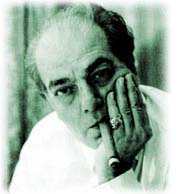

CLASSICAL BRASIL
| "ernesto nazareth">> | recommendations • brasil guide • pryngo guide • contact pryngo • amazon.com | |
 |

CLASSICAL BRASIL |
|
 |
VILLA-LOBOS RIO STREET SERENADER AND LATTER-DAY BACH What do you hear in Villa-Lobos? Tom Jobim, as a young man, heard in it the inspiration to spend a life in music making. South America's largest nation has produced the continent's most creative and prolific composer in the classical field, Heitor Villa-Lobos. Born March 5, 1887 in Rio de Janeiro, he was largely self taught in both formal composition and a broad range of local musical idioms. After participating in a scientific expedition into the rainforest at the age of 25 to study the music of local tribes, Amazonian influences played as much a part of his musical imagination as that the popular instrumentalists with whom he improvised on the streets of Rio. He also looked abroad, to the Arab and Andalusian influences of Iberia, for example. Even more obvious an influence are the French composers he met in Paris between 1923 and 1930. There he performed his works and recieved heady praise from the likes of Florent Schmitt. Arthur Rubinstein took to championing his piano works. Contemporary reports of his creativity and personal demeanor coined the term "art sauvage." Back in Brasil, he returned the favor to Europe by conducting Ravel, Roussel, and Schmitt. He astounded conservative local critics with his fearless originality, which brought both modernist sophistication from Paris as well as popular sounds from the street into the realm of high art to define a local vernacular. This idea of devouring influences left and right, from near and afar, was echoed in avant garde literary movements of his day and in the Tropicalistas of the '60s. Among composers of the distant past, he revered Victoria, Bach, and Beethoven, among others, for their huge strides of innovation while latter-day, somewhat reactionary composers such as Brahms were hardly worth a listen for Villa-Lobos. Sadly, his "greatest hit" is known most recently from television commercials, and few would recognize any of his other pieces. It is the first movement of the fifth Bachianas Brasileiras for soprano and cellos, characteristic of Villa-Lobos in its odd mastery of disperate inspirations, Bach's contrapuntal ingenuity and the rhythmic forms of northeastern Brasil. His scope of achievement included self-invented forms such as the Bachianas but extended to traditional forms: operas, songs, ballets, symphonies, concertos, and so on. In all, his ceaseless manner of composition amounted to an oeuvre of about 2,000 works. He continued to compose and perform until his death in 1959. In fact, he conducted many of his major works in recording sessions for EMI well into his final year. |
|
 |
 |
|
 |
 |
|
|
STRING QUARTETS, Cuarteto Latino VILLA-LOBOS PAR LUI-MÊME, Villa-Lobos, Victoria de Los Angeles |
||
|
|
||
|
VILLA-LOBOS, Lisa Peppercorn VILLA-LOBOS: THE MUSIC, Lisa Peppercorn PIANO MUSIC 'PROLE DO BEBE" (score), Heitor Villa-Lobos CHOROS 6 (score), Maazel, Villa-Lobos |
||
 |
 |
|
 |
 |
|